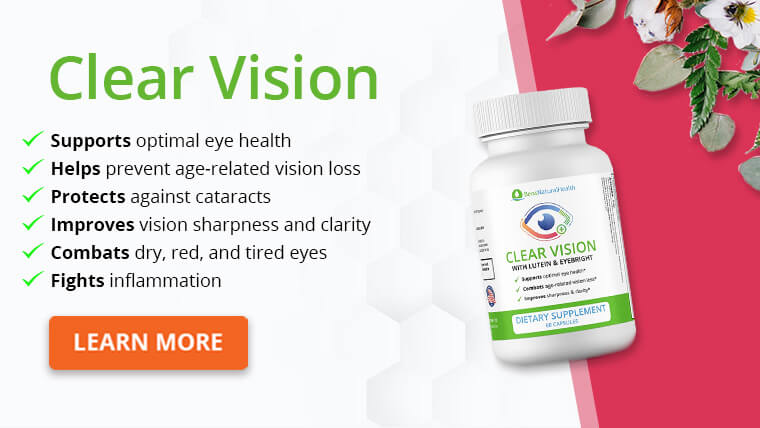Tearing is a normal function of the eye that keeps the eye surface always moist. The moisture from tears on the front of the eye, the cornea, is essential to prevent damage to the cornea from dryness leading to corneal abrasion and ulceration. Moreover, a healthy tear film is vital in maintaining a clear optical pathway for the light entering the eye.
The tears of the eye come from 2 primary sources:
- The main lacrimal gland that is located above the outer eye
- The accessory lacrimal glands located within the eyelids
The main lacrimal gland controls reflex tear production. For example, during crying or exposure to irritants to the nose or the eye. The accessory lacrimal glands are responsible for the baseline tears production, which keep the eye surface moist. Tears then drain through tiny openings in the eyelids that connect to the nasal cavity through the tear duct.
Tear production and drainage is a continuous balanced dynamic process. Therefore, any disturbance of this balance could lead to excessive watering.
Get Your FREE Eye Health Diet Plan
- Nine most important vitamins for eye health
- How to naturally protect and improve your eye health as you age
- Developed exclusively by our medical doctor
Causes of watery eyes
Some extra tear production is normal in cold or windy environments or if a foreign body gets into the eye. However, excessive and constant watering is abnormal and may occur for several reasons. In the following section, we will review the common as well as the serious causes and treatment of watery eyes.
1) Blocked tear drainage system
This is one of the common causes of watery eyes. It happens when the tear drainage system blocks. The blockage can occur at any point. Starting from the small openings in the eyelids that drain the tears from the surface of the eye, passing by the small tear ducts, and the large central tear duct that goes down to open into the nose (the nasolacrimal duct). Tear duct blockage can occur due to infection, trauma, or just aging. When the duct gets narrow or clogged, the tears back up, and your eyes get watery and irritated or infected. Signs include
- overflow of tears on your cheek
- excessive mucus discharge
- crusty eyelashes
- blurred vision
If you have these signs, you may want to see an eye doctor. The doctor will perform certain simple tests in the office to identify the cause for your watery eyes. They may try to test the patency of the tear drainage system by flushing the duct with saline. If your tear drainage system is blocked, you might need surgery to place stents in your tear drainage ducts or build a new drain.
In newborns, blockage of the terminal end of the tear duct in the nose by a small thin congenital membrane is a common cause of watery eyes. If your baby has watery eyes, see an eye doctor to rule out more serious causes of watery eyes, such as eye infections. If the cause is a blocked tear duct, your eye doctor or the pediatrician can teach you certain simple maneuvers to relieve this obstruction.
2) Eyelid disorders
To maintain a seamless flow of tears into the nose, the eyelids must be in their normal position in relation to the eyeball. If one of your eyelids (usually the lower eyelid) sags or turns outward, tears will not drain the way they should. Your eyes will be watery, and tears might even flow over your cheek. If your eyelid turns inward, your eyelashes will rub against your eye and irritate it, causing excessive eye-watering. If your eyes are always watery or irritated because of eyelid sagging or abnormal position, a specialized eye doctor can correct this problem.
3) Bumps on the Eyelids
If you have a bump on your eyelid, this might be a stye or a chalazion or, much less likely, a tumor. Styes are usually painful, reddish, and bigger. Chalazions rarely hurt unless it gets infected.
To treat a small eyelid bump, the eye doctor usually recommends warm compresses using a clean washcloth in hot water. Hold it to your eyelid for 10-15 minutes and repeat 3 to 5 times a day. You may also gently massage around a chalazion with a clean finger.
If that does not help or makes things worse, your doctor might prescribe antibiotics or inject a steroid shot to ease the swelling of a chalazion. If the bump is big and will not go away with the simple conservative measurements, or if it affects your vision, your eye doctor may incise and drain it. It is strongly discouraged to try opening these bumps yourself as this might make things worse and might cause the spread of infection.
4) Allergies
In people who have an allergy, exposure to pollen, pet dander, mites, and fumes can cause your eyes to turn red, itchy, and watery. Itching is the hallmark of allergic eye diseases. Watery, itchy eyes often come with a cough, runny nose, and other classic allergy symptoms. However, it is not uncommon to have isolated eye allergy symptoms without any other associated symptoms. Anti-allergic medications such as anti-histaminic eye drops and avoiding your triggers can help. If these measures fail to resolve your symptoms, you may need to visit your eye doctor. They can give you a full evaluation and possible prescription of stronger medications such as steroid eye drops.
Caution should be used when steroid eye drops are administered. Abuse of these eye drops without adequate supervision by an eye doctor can cause serious elevation of intraocular pressure (Glaucoma). Persistent elevation of intraocular pressure for a long time can end up in blindness.
5) Conjunctivitis (Pinkeye)
The conjunctiva is a thin transparent vascular membrane that covers the white (sclera) of the eye. It can get inflamed and turns pink due to many causes, such infection or allergies. Excessive tearing can be an associated symptom of conjunctivitis or pinkeye. Other signs are blurry vision, pus or mucus in the eye, and red inner eyelids. If you have any of these symptoms, you need to see an eye doctor.
The eye doctor will rule out the more serious conditions that have similar presentation, such as corneal ulcers, determine the cause of your conjunctivitis, and tailor the treatment accordingly. Also, be sure to keep your hands away from your eyes and wash them with lid scrubs or warm soapy water before and after you apply eye drops. If the cause is an infection, towels, washcloths, or anything else that touches your eyes should not be shared with anyone till the completion of treatment and resolution of symptoms.
6) Dry Eyes
While dry eye might be considered as a counterintuitive cause for excessive eye-watering, it is a common reason for watery eyes. When the surface of the eye is dry, it gets irritated, and the main lacrimal gland starts to produce excessive tears resulting in an overflow of tears. You may also have stinging, burning, foreign body sensation, redness, and blurred vision. If you have a mild case, over-the-counter artificial tears often help. However, if you have severely dry eyes, you might want to get a full evaluation by an eye doctor.
Your eye doctor can offer you several options for treatment based on the cause of your severe dryness. These include topical eye drops, light therapy to the face, simple office maneuvers and procedures. Also, it is essential to mention that some systemic autoimmune diseases such as Rheumatoid arthritis can cause severe dry eye. Adequate control of the systemic inflammation associated with these autoimmune disorders is essential to treat dry eyes in these cases.

More serious conditions that relate to tearing- Corneal disorders
The cornea is the transparent tissue in the front of the eye that allows the transmission of light rays into the eye. The cornea is a susceptible tissue, and a minor scratch in it can cause severe eye pain, light sensitivity in addition to excessive watering. Corneal scratches or abrasions usually happen after trauma, such as trauma with fingernails or sharp objects. In these cases, you need a full evaluation and follow-up by an eye doctor as these abrasions might progress into a corneal ulcer which is a sight-threatening condition.
Corneas can also get inflamed/infected, a condition called keratitis which can also cause corneal ulceration resulting in severe eye pain, light sensitivity, decreased vision, and excessive tearing. If you wear contact lenses and start having these symptoms, you need to see an eye doctor immediately. Any delay may damage your eyesight or cause blindness. Your doctor might need to obtain a culture from your cornea and begin treatment with antibacterial, antiviral, or antifungal medications/eye drops based on the clinical picture of your corneal ulcer. If your ulcer is resistant to treatment, you may need a corneal transplant to save your vision.
People who wear contact lenses for long hours or do not take them out during sleep are at a higher risk of getting corneal ulcers. The best way of prevention is to maintain adequate contact lens hygiene and avoid wearing them for a long time or sleeping in them.
When to see a doctor
As a general rule, acute/recent onset of watery eyes is more concerning than chronic onset. You also should see an eye doctor right away if you have decreased vision, severe eye pain, and light sensitivity in association with watery eyes. Contact lens wearers should have a lower threshold of seeing an eye doctor if they have watery eyes as their chances of getting corneal ulcers are higher.
Conclusion
There are several causes for watery eyes that can range from simple to sight-threatening conditions. Moreover, there are various treatment options depending on the cause of excessive tearing. Visiting an eye doctor will help you figure out the cause of your excess tears and the best ways to treat them.







